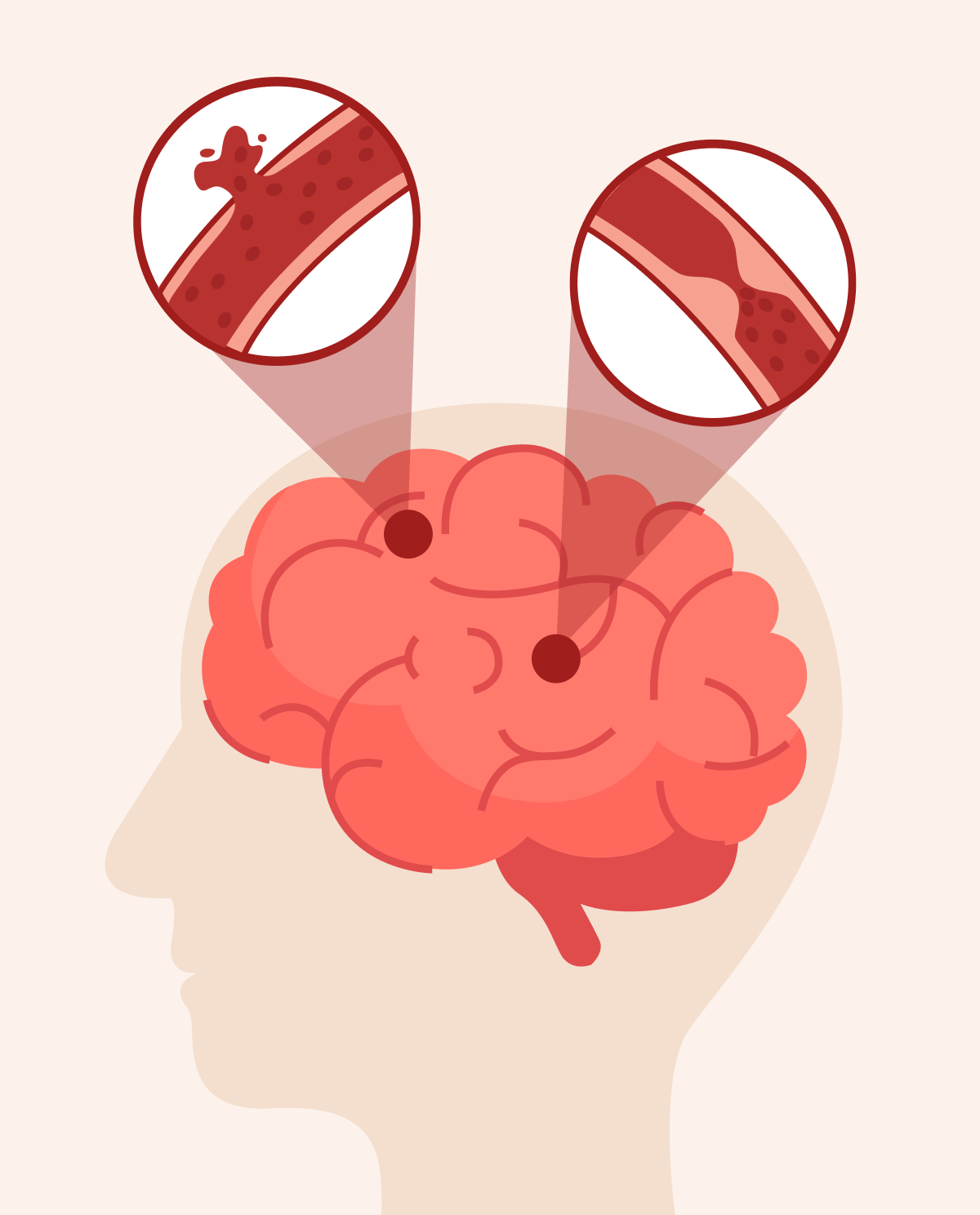Causes and types of strokes
Two main causes of strokes occur:
- Hemorrhagic in nature: the following develops when blood vessels either rupture or leak. It is mostly associated with high blood pressure, anticoagulant treatment complications, traumatic injury, and ischemia leading to fluid leakage.
- Ischemic in nature: the following is the most commonly occurring type of stroke. It develops when vessels are severely narrowed or completely blocked.
- The third type is transient in nature: transient ischemic attack (TIA) can be considered a "minor" stroke as it is temporary in nature and symptoms subside after a few minutes without residual complications.
Signs and symptoms associated with stroke
- Pins and needle sensation (weakness/numbness) and/or paralysis of one side of the body, mostly in the arm, leg, or face.
- A sudden very painful headache that is possibly accompanied by a loss of consciousness, gastrointestinal symptoms (nausea/vomiting), and lightheadedness.
- Difficulty initiating movement of one side.
- Difficulty initiating speech and/or understanding spoken words.
Diagnosis
What to look for if someone you know may experience a stroke?
As a person that isn’t in the medical field, the F.A.S.T test can diagnose the development of a stroke and may save their life because as stated earlier, time is of the essence:
- F (face): you may ask the person to smile and observe. Is a part of the face drooping or paralyzed?
- A (arms): you may ask the person to raise both arms. Is one of the arms unintentionally drifting back downwards?
- S (speech): give a short phrase and ask the person to repeat it back. Can you observe any abnormalities in speech patterns?
- T (time): again, time is of the essence so call emergency operators as soon as possible.
Diagnostic procedures
- First and foremost, a physical exam by the doctor is imperative.
- Blood analysis to check for coagulation abnormalities.
- Imaging: carotid ultrasound, MRI, CT scan, and a cerebral angiogram.
Treatment
Ischemic stroke treatment options
- An IV access will be placed in order to give medication that is used to break down the clot, it’s called Tissue plasminogen activator (TPA). If given within a 4.5-hour window, the patient might fully recover.
- Emergent endovascular procedures involve the following: injecting TPA directly into the brain vasculature by using a catheter; clot removal also known as mechanical thrombectomy; angioplasty; and carotid endarterectomy. Endovascular procedures give physicians a longer time frame to act as compared to IV infusions.
Hemorrhagic stroke treatment options
This type of stroke measure requires timely control of the bleeding and intracranial pressure.
- If you’re on anticoagulant therapy, you will be given medication or receive drug product transfusions to counter the effects of the anticoagulant medication.
- Surgery may be considered if the blood pooling in the brain is causing too much pressure within the brain.
- Endovascular embolization is focused on using a method called "coiling", the surgeon will place material that induces clotting in order to stop the bleeding.








